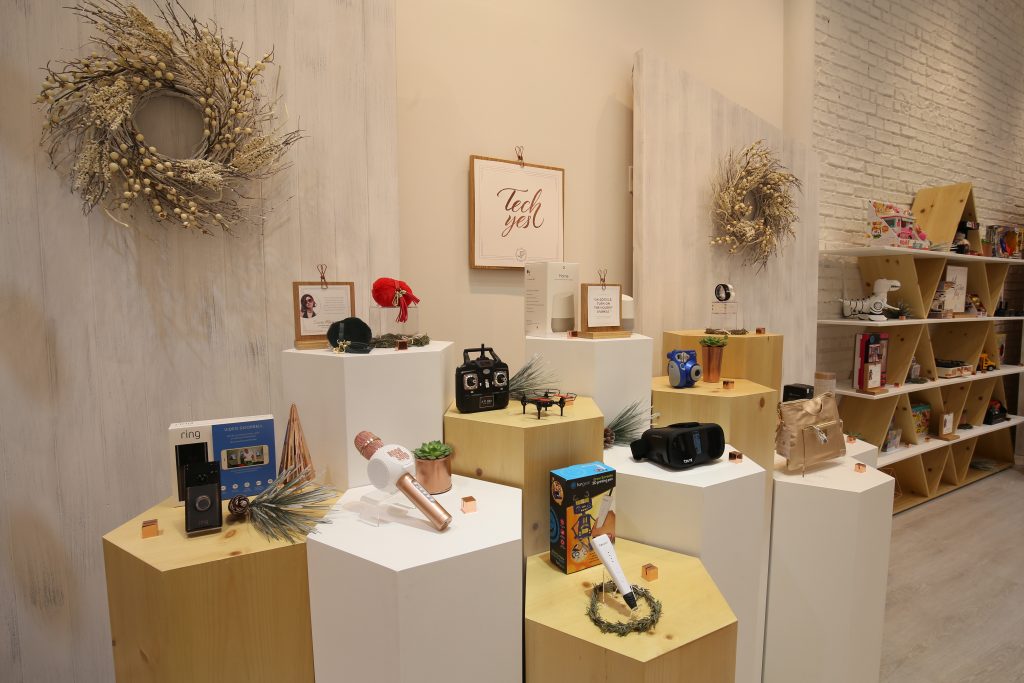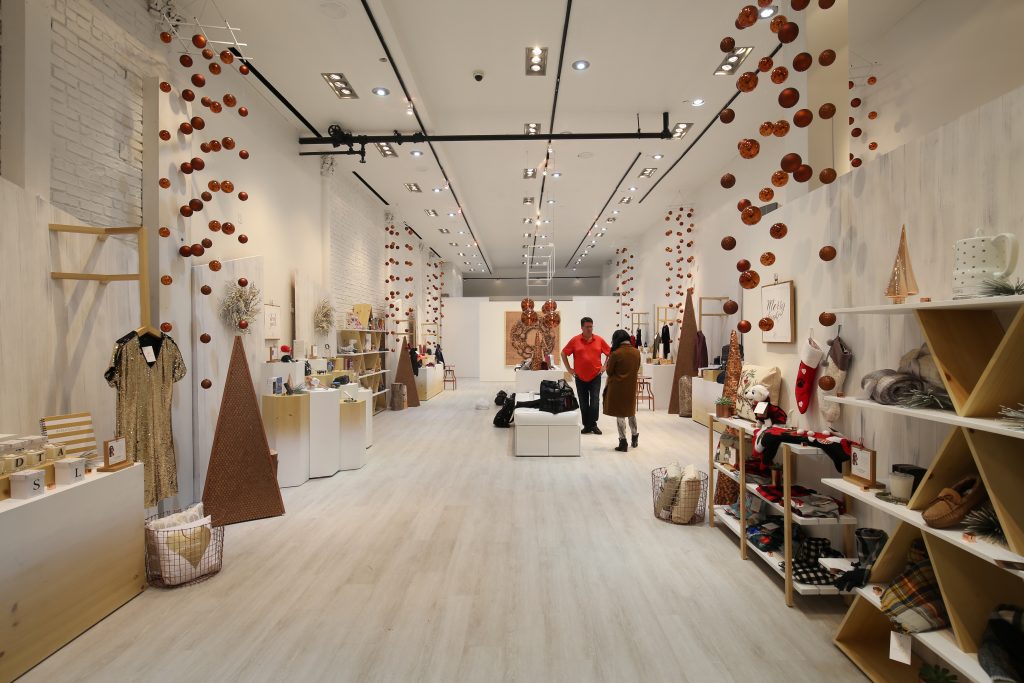Pop-ups have a number of benefits for all kinds of brands. One of those being an opportunity to give your brand a boost when sales are slow. That was the case for JCPenney’s two-day Jacques Penné pop-up in New York City, powered by Storefront.
Facing similar challenges as many other big box retailers, JCPenney closed close to 140 stores in 2017. In an effort to change the perception of shoppers, especially younger ones, the brand launched its Jacques Penne pop-up: “premium lifestyle at an affordable price.” drove tons of traffic.
Jacques Penné’s New York City Debut
JCPenney used the holiday season to promote the launch of the new exclusive Jacques Penné collection. Rather than making this available at stores or on the main website, JCPenney opened a two-day pop-up shop that showcased the collection and offered customers a way to purchase the products in person.
Plus, customers could feel good about supporting the brand: $50,000 worth of merchandise was donated to the JCPenney Foundation.
The collection was also available to a global audience online through a digitally immersive experience that was essentially a virtual tour of the pop-up. Jacques Penné was a way to “rediscover JCPenney and get everything on your list within your budget,” says Alexandra Wicka, who worked with JCPenney on the project in her role as senior account manager at Periscope.
Getting Started
Budget was one of the first considerations for the Jacques Penné pop-up. JCPenney broke down the budget for Periscope — they had $250,000 to work with.
After that, it was time to start coming up with ideas to bring the concept to life. “JCPenney gave guidelines of what they wanted to highlight, and Periscope categorized on trends,” says Wicka. Brainstorming started as early as August, but Wicka recommends never to underestimate how much time you’ll need to plan.
“Words of advice: Start as early as you can, plan for things to change, and be agile,” Wicka says. Not everything will go according to plan.
They signed the lease for the pop-up space on October 18, and opened doors less than two months later on December 8.
Finding the Right Pop-Up Space
For the Jacques Penné team, the creative ideas were the primary focus, the space second. “The look and feel came first, in tandem came the space,” says Wicka. “Once look and feel was shared, it was about execution.”
It was essential to find the right space to complement the creative idea, because the customer experience should always be at the forefront. “Make sure it connects with your brand identity,” says Wicka.
On October 18, less than two months before the pop-up opened, they signed the lease for the space. Here’s what they found.
Finding the right space wasn’t easy. “Unexpected things came up with the space,” says Wicka. Be prepared for the unexpected, especially if this is your first pop-up. Plus, keep checking the Storefront page for updated listings and queries for you.
Bridging the Gap Between the Digital and Physical Worlds
Most multi-channel brands face challenges in creating a synonymous digital and physical experience. This was one of the challenges that Periscope knew they had to overcome in a short amount of time with the Jacques Penné pop-up.
“Connecting the virtual store with the store in real life was hardest,” says Wicka. “We had to meet deadlines in advance to set everything up.”
The Jacques Penne’s complementary online experience was a shoppable microsite that featured a virtual reality component. Users could tour the pop-up from their computers and mobile devices via the microsite.
“The microsite extended the pop-up for purchases,” Wicka says. Not only was Jacques Penné able to capture in-person sales at the pop-up, but they could reach a global audience online — all the while sharing the physical experience with an immersive digital one to match.
Strategic Collaborations
Partnering with other brands and influencers can increase the reach for your pop-up, and JCPenney tapped into that opportunity through a few smart partnerships:
Periscope: The social video-streaming app Periscope was a key partner, especially in bringing the digital aspects to life. JCPenney recognized that digital wasn’t their area of expertise, and thus turned to a collaborator with that skill set and experience.
Influencers and Celebrities: JCPenney also leveraged influencers and celebrities as part of the pop-up experience. They enlisted style icons like Nicole Richie, fashion blogger Danielle Bernstein, Disney channel star Laura Marano, and YouTubers Brooklyn and Bailey McKnight.
These influencers curated nine collections for Jacques Penné to feature at the pop-up and on the microsite. Some of them also attended the pop-up for meet-and-greets, which helped build buzz and drive more customers to visit the event.
The Pop-Up Dream Team: JCPenney built a team dedicated to the Jacques Penné. They knew that finding team members who knew about pop-ups and had experience in the area would be crucial to success. The team was comprised of about 30 individuals.
Conclusion
JCPenney recognized the value in brand awareness and found a strategic way to drive conversions at the same time. Through leveraging influencers, brand partners and seasonality to solve customers problems, the brand provided an immersive, positive experience.
It was so successful, that they’re adopting some of these approaches in their 2018 strategy.
Remember: Sales and traffic don’t have to be the primary goals. If you focus on brand awareness, and putting your customers first, other metrics will organically improve.
Get your pop-up underway in 3 easy steps>>
- London-Based Lifestyle Brand Mantidy Launches Pop Up in Marylebone - November 13, 2019
- Fashion Retailer SHEIN Opens Dallas Pop-Up Shop With Storefront - November 11, 2019
- Howard Johnson popped-up with a candy-themed store in NYC to support brand refresh - September 13, 2019







